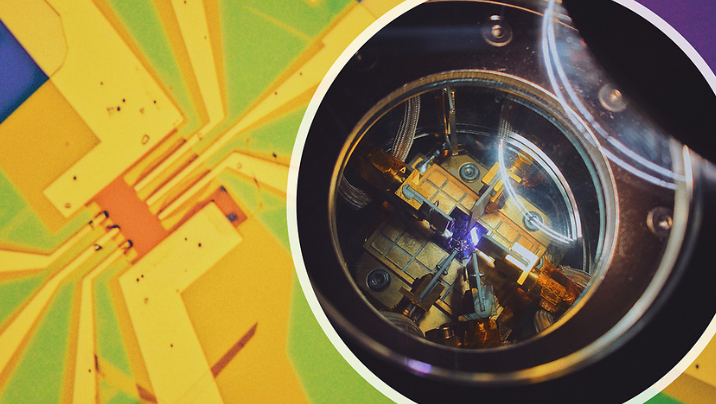However, while these van der Waals (vdW) heterostructures are critical to many scientific studies and technological applications of layered materials, efficient methods for building diverse vdW heterostructures are still lacking.
A team of researchers has found a versatile method for the construction of high-quality vdW heterostructures. The work is a collaboration between the laboratory of Davood Shahrjerdi, a professor of Electrical and Computer Engineering at the NYU Tandon School of Engineering and a faculty member of NYU WIRELESS; a group led by Javad Shabani at the Center for Quantum Phenomena, New York University; and Kenji Watanabe and Takashi Taniguchi of National Institute for Materials Science, Japan. Their study was published this week in Nature Communications.
A crucial step for building vdW graphene heterostructures is the production of large monolayer graphene flakes on a substrate, a process called mechanical “exfoliation.” The operation then involves transferring the graphene flakes onto a target location for the assembly of the vdW heterostructure. An optimal substrate would therefore make it possible to efficiently and consistently exfoliate large flakes of monolayer graphene and subsequently release them on-demand for constructing a vdW heterostructure.
The research team applied a simple yet elegant solution to this challenge involving the use of a dual-function polymeric film with a thickness of below five nanometers (less than 1/10,000th the width of a human hair). This modification allows them to “tune” the film properties such that it promotes the exfoliation of monolayer graphene. Then, for the Lego-like assembly, they dissolve the polymeric film underneath the monolayer graphene using a drop of water, freeing graphene from the substrate.
“Our construction method is simple, high-yield, and generalizable to different layered materials,” explained Shahrjerdi. “It enabled us to optimize the exfoliation step independently of the layer transfer step and vice versa, resulting in two major outcomes: a consistent exfoliation method for producing large monolayer flakes and a high-yield layer transfer of exfoliated flakes. Also, by using graphene as a model material, we further established the remarkable material and electronic properties of the resulting heterostructures.”
The team included investigators Zhujun Huang, and Edoardo Cuniberto, Ph.D. students at NYU Tandon; Abdullah Alharbi of NYU Tandon and the King Abdulaziz City for Science and Technology, Riyadh, Saudi Arabia; and William Mayer, postdoctoral researcher at NYU’s Center for Quantum Phenomena.
The research was supported by a grant from National Science Foundation.
“Versatile construction of van der Waals heterostructures using a dual-function polymeric film” is available athttps://www.nature.com/articles/s41467-020-16817-1.
About the New York University Tandon School of Engineering
The NYU Tandon School of Engineering dates to 1854, the founding date for both the New York University School of Civil Engineering and Architecture and the Brooklyn Collegiate and Polytechnic Institute (widely known as Brooklyn Poly). A January 2014 merger created a comprehensive school of education and research in engineering and applied sciences, rooted in a tradition of invention and entrepreneurship and dedicated to furthering technology in service to society. In addition to its main location in Brooklyn, NYU Tandon collaborates with other schools within NYU, one of the country’s foremost private research universities, and is closely connected to engineering programs at NYU Abu Dhabi and NYU Shanghai. It operates Future Labs focused on start-up businesses in downtown Manhattan and Brooklyn and an award-winning online graduate program. For more information, visit http://engineering.nyu.edu.
###
Original post https://alertarticles.info



